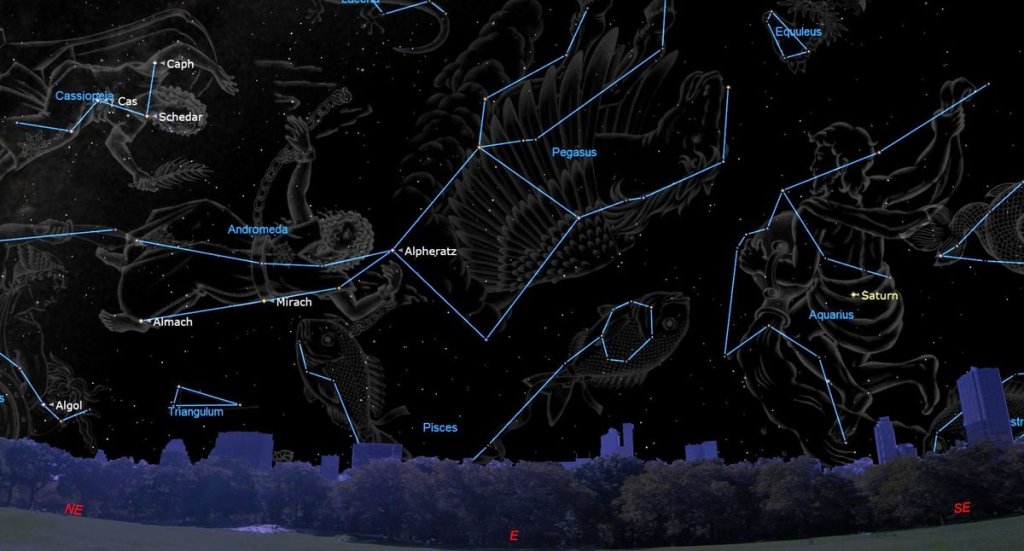
See the Great Square of Pegasus trot through the night sky this month (Image Credit: Space.com)
One of the most well-known groupings of stars is beginning to rise higher in the night sky this season.
Look to the east in the evenings throughout September to find the Great Square of Pegasus as it climbs higher in the night sky. On Thursday (Sept. 7), the Great Square should be visible at sunset some 16 degrees above the horizon. (The width of your first at arm’s length equals around 10 degrees.) By month’s end, the four stars that make up the square will be roughly twice as high by sundown, as will the rest of the stars that comprise the Pegasus constellation.
The Great Square is made up of four stars of roughly equal brightness (or magnitude): Scheat, Alpheratz, Markab and Algenib. These stars make up the “body” of the fabled winged horse of Greek mythology. Get familiar with the square this month in order to become acquainted with the Pegasus constellation — and, as an added bonus, use it to find the nearby star 51 Pegasi, home to the first exoplanet ever discovered orbiting a main sequence star like our sun.
Related: Night sky, September 2023: What you can see tonight [maps]

Want to see the moon or the stars of the Great Square or Pegasus constellation up close? We recommend the Celestron Astro Fi 102 as the top pick in our best beginner’s telescope guide.
The Great Square isn’t an official constellation but rather an asterism, another category of stars that form a recognizable pattern in the night sky. The group of seven bright stars in the Ursa Major constellation known as the Big Dipper is arguably the most famous asterism.
The Great Square might resemble more of a “great diamond” due to the fact that it’s most often tilted with one star, Algenib, facing downward. While the square (or diamond) might appear empty if your skies aren’t sufficiently dark, there are actually a few notable stars in the center. For the Anishinaabe people of the Great Lakes region, the square represents the torso of Mooz, the Moose. Two dim stars in the upper right of the square are said to be the Moose’s “heart.”
Just to the right of the halfway point of the line formed between Scheat (the topmost star of the Great Square) and Markab (the rightmost star) is 51 Pegasi, a yellowish star also known as Helvetios that is home to the first exoplanet ever discovered orbiting a sun-like star, 51 Pegasi b, a Jupiter-size planet that is 20 times closer to its star than Earth is to the sun.

Both the Great Square and the Pegasus constellation should reach their best viewing position by October, a few hours after sunset.
If you are hoping to catch a look at the stars of the Great Square of the Pegasus constellation, our guide to best binoculars are a great place to find some wide-angle optics that are easy to take with you into the outdoors.
But if you want to look some of these stars like 51 Pegasi up close, check out our guides to the best telescopes or the best budget telescopes.
And you’re looking to snap photos of any of these sights or the night sky in general, check out our guide on how to shoot the night sky, as well as our best cameras for astrophotography and best lenses for astrophotography.
Editor’s Note: If you snap an image of the Great Square and would like to share it with Space.com’s readers, send your photo(s), comments, and your name and location to spacephotos@space.com.








